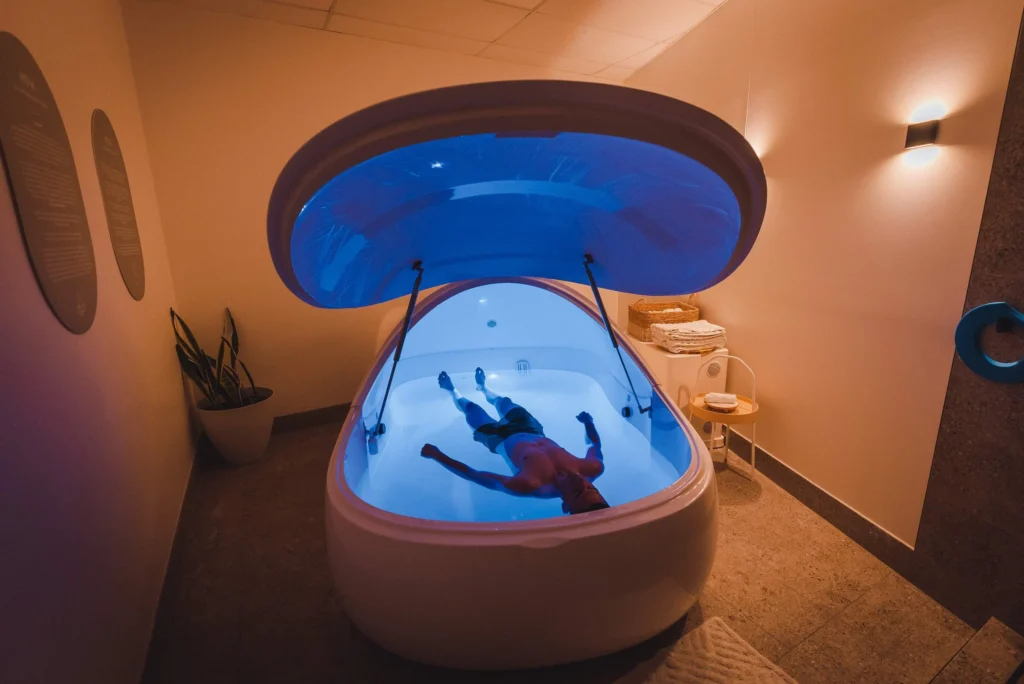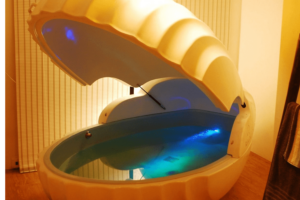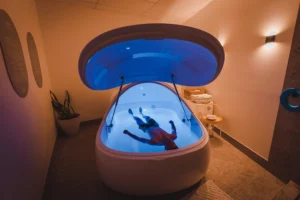
In today’s fast-paced world, stress, anxiety, and physical tension have become an unavoidable part of daily life. People are increasingly turning to holistic wellness practices to recharge their mind and body, and one of the most effective methods gaining popularity is Float Therapy Services. If you’ve ever wondered what float therapy is, how it works, and what benefits it offers, this blog will provide a comprehensive guide to understanding this transformative wellness experience.
What Is Float Therapy?
Float therapy, also known as sensory deprivation therapy, is a wellness practice where an individual floats in a tank filled with water and Epsom salts. The water is maintained at body temperature, and the tank is designed to minimize sensory input from light, sound, and touch. This unique environment creates a state of deep relaxation, allowing the mind and body to reset.
The main goal of float therapy sessions is to promote mental clarity, reduce stress, and improve overall well-being. People have reported experiencing profound relaxation, better sleep, and even enhanced creativity after consistent sessions.
How Does Float Therapy Work?
The mechanism behind float therapy is relatively simple yet incredibly effective. During a float session therapy, the buoyancy of the Epsom salt-infused water allows the body to float effortlessly. This reduces the effects of gravity on muscles and joints, alleviating tension and pain. By eliminating sensory distractions, the brain can enter a meditative state, often resulting in a deep sense of calm.
Some of the key elements of a float therapy session include:
- Isolation from sensory input: Reduced light and sound help your brain slow down and focus inward.
- Epsom salts in water: High concentrations of magnesium sulfate help relax muscles and improve skin health.
- Buoyancy effect: Eliminates pressure on joints, enhancing physical relaxation.
The Science Behind Float Therapy
Research indicates that float session therapy triggers several physiological and psychological benefits. The magnesium in Epsom salts can be absorbed through the skin, aiding muscle recovery and reducing inflammation. Floating in a weightless environment decreases cortisol levels, the hormone responsible for stress, and increases endorphin release, promoting a natural sense of happiness and relaxation.
Brainwave activity during a float therapy session often shifts from beta waves, which dominate active thinking, to alpha and theta waves, associated with relaxation, creativity, and even deep meditative states.
Float Therapy Services: What to Expect
Most Float Therapy Services offer private float tanks or pods, ensuring a comfortable and uninterrupted experience. Here’s a step-by-step overview of what a typical float session therapy entails:
- Arrival and Preparation
You’ll be guided to your float room, where you’ll shower to remove any oils or lotions. This ensures the water remains clean for a luxurious floating experience. - Entering the Float Tank
The float tank is filled with a highly concentrated Epsom salt solution, allowing you to float effortlessly. The water is kept at skin temperature, making it nearly impossible to tell where your body ends and the water begins. - The Float Session
During a float session therapy, you can choose complete darkness or gentle ambient lighting. Most people spend 60–90 minutes floating, although beginners may start with shorter sessions. - Post-Float Relaxation
After your session, you’ll shower and take a few minutes to transition back to reality. Many participants report feeling refreshed, rejuvenated, and surprisingly energized after a float.
Float Session Benefits
Float session benefits are both physical and psychological. Here’s an in-depth look at some of the most common advantages:
1. Reduces Stress and Anxiety
By creating a zero-gravity, sensory-reduced environment, float therapy helps lower cortisol levels. Regular float therapy session participants often report significant reductions in stress and anxiety, leading to improved mental health.
2. Enhances Sleep Quality
Many individuals struggling with insomnia or irregular sleep patterns find that float session therapy helps reset their circadian rhythm, promoting deep, restorative sleep.
3. Relieves Muscle Tension and Pain
The buoyancy and magnesium absorption work together to relax muscles, reduce inflammation, and alleviate chronic pain. Athletes frequently incorporate float therapy services into their recovery routines.
4. Boosts Mental Clarity and Creativity
With minimal sensory input, the brain can enter a meditative state, allowing new ideas to emerge. Writers, artists, and business professionals often use float session therapy as a tool for enhanced creativity.
5. Supports Emotional Well-Being
Regular float therapy sessions have been linked to improved mood, reduced symptoms of depression, and an overall sense of well-being.
6. Improves Skin and Detoxification
Epsom salts help detoxify the body and improve skin health. The magnesium in the water can also support better nutrient absorption and overall wellness during float session therapy.
Who Can Benefit From Float Therapy?
Almost anyone can enjoy the float therapy session experience, though some groups may find it particularly beneficial:
- Individuals with chronic pain or muscle tension
- People experiencing high stress or anxiety levels
- Athletes seeking enhanced recovery
- Those struggling with sleep issues
- Creative professionals looking to boost focus and clarity
However, it’s always advisable to consult with a healthcare provider if you have specific medical conditions before trying a float session therapy.
Tips for Your First Float Session
To make the most of your float therapy services, follow these simple tips:
- Avoid caffeine or heavy meals before your session
- Shower thoroughly before entering the tank
- Use earplugs if recommended to prevent water from entering the ears
- Set intentions: Decide whether your goal is relaxation, meditation, or stress relief
- Stay hydrated: Drink water before and after the float session therapy
How Often Should You Float?
The frequency of float therapy sessions varies depending on your goals. For stress reduction and general wellness, one session per week is often sufficient. Athletes or individuals with chronic pain may benefit from 2–3 sessions per week. Many people find that regular float session therapy leads to cumulative benefits over time.
Choosing the Right Float Therapy Services
When selecting float therapy services, consider these factors:
- Cleanliness and hygiene of the float tanks
- Professionalism of the staff
- Private vs. shared facilities
- Session duration and pricing options
A good float therapy session provider will prioritize your comfort and ensure that your experience is both safe and rejuvenating.
Frequently Asked Questions (FAQ)
1. What should I wear during a float session therapy?
Most participants float without clothing, but swimsuits are allowed if preferred.
2. How long is a typical float therapy session?
Sessions usually last 60–90 minutes, but beginners may start with 30–45 minutes.
3. Can float therapy help with chronic pain?
Yes, the combination of buoyancy and magnesium absorption can relieve muscle tension and joint pain.
4. Is float therapy safe?
Float therapy is generally safe for most people. Consult a healthcare provider if you have open wounds, infections, or specific medical conditions.
5. How soon will I notice float session benefits?
Some benefits, like relaxation and mental clarity, may be immediate, while others, like improved sleep and reduced chronic pain, may require multiple sessions.
6. Can children try float therapy?
Yes, with adult supervision and consent from the facility. Age restrictions may vary.
7. How often should I schedule a float therapy session?
Once per week is a good starting point for general wellness, with more frequent sessions for targeted goals like pain relief or athletic recovery.
8. Do I need to meditate during the float session?
No, meditation is optional. Many people simply enjoy the experience of floating and relaxing.
9. Can float therapy help with anxiety and depression?
Yes, many studies suggest float therapy reduces cortisol levels, promoting mental well-being and emotional balance.
10. Are there any side effects?
Some people may experience temporary lightheadedness or skin dryness, which typically resolves quickly.
Conclusion
Float Therapy Services offer a unique, holistic approach to wellness that combines physical relaxation, mental clarity, and emotional balance. A float session therapy provides numerous benefits, from reducing stress and anxiety to improving sleep, creativity, and overall health. Whether you are seeking relief from chronic pain or simply want to recharge your mind, a float therapy session could be the rejuvenating experience you need.
If you’re ready to explore the transformative benefits of float session therapy, booking your first session today could be the start of a healthier, calmer, and more balanced lifestyle. The journey to ultimate relaxation and wellness is just a float away.




